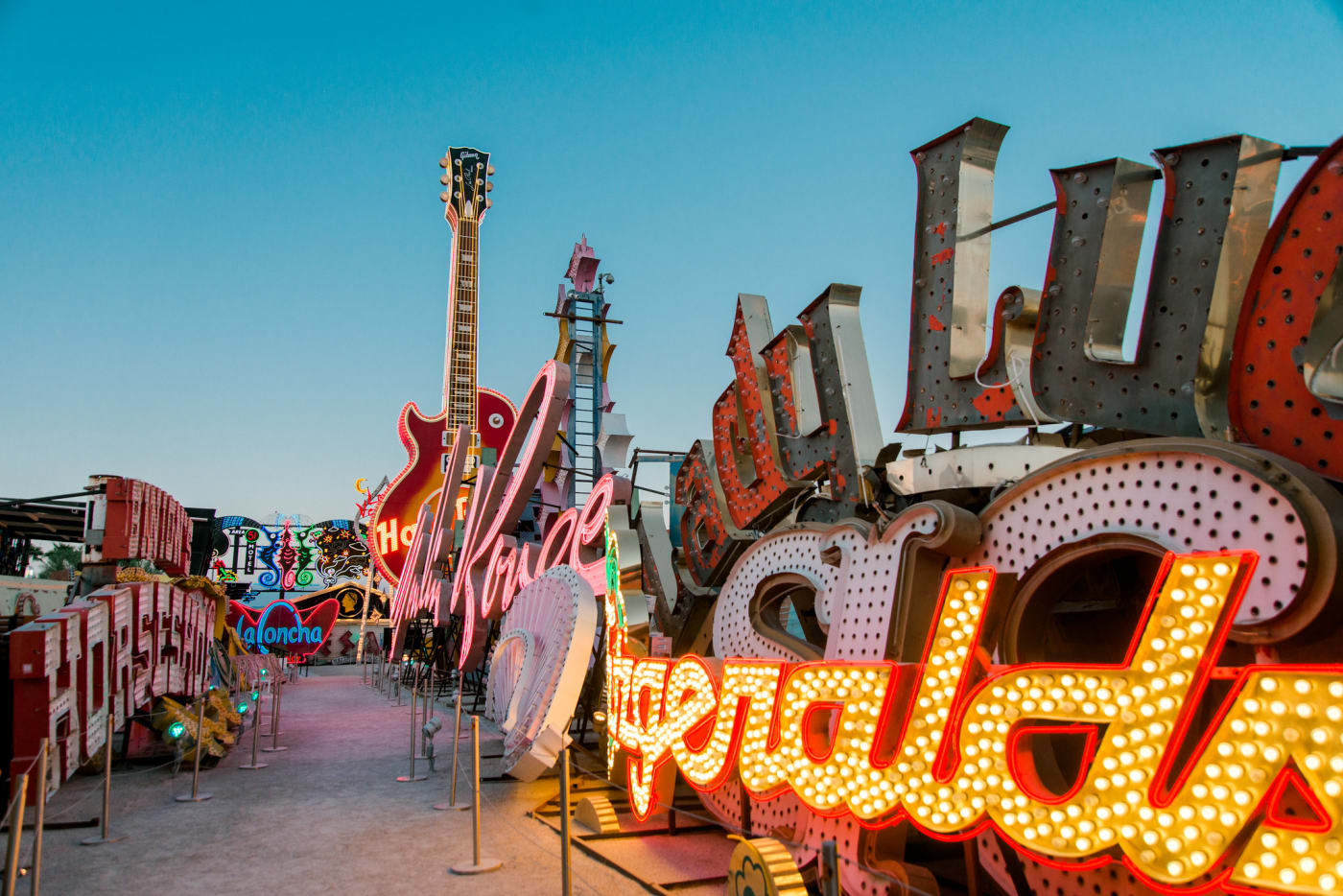Binion’s Horseshoe Hotel & Casino

Please position yourself in front of the Binion’s Horseshoe Hotel & Casino signage, located to the left of the El Cortez sign.
“Decorated shed” buildings are typically generic-shaped structures with added signs and decorations that gesture toward their intended purposes, such as megastores, roadside hotels, or big box-casinos like the Binion’s Horseshoe Hotel & Casino or the Golden Nugget Hotel & Casino.
Architects work closely with sign designers to bring their visions to life through signage. While this collaboration might not guarantee commercial success, it can often yield beautiful results. The Binion’s Horseshoe signage, for example, was part of a 1961 partnership between architects Wayne McAllister and William Wagner in collaboration with YESCO (Young Electric Sign Company) sign designers. The resulting signage is one of the largest displays of neon in the world, featuring an estimated 8 miles of neon tubing and 30,000 lightbulbs.
“Decorated shed” and its related terminology were first coined by Robert Venturi, Denise Scott-Brown, and Steve Izenour, authors of Learning from Las Vegas, a highly influential theoretical text on postmodernist architecture. If modernist architecture could be summarized in a single phrase, it might be Mies van der Rohe’s succinct mantra of “Less is more.” In Learning from Las Vegas, the authors propose a new, opposing phrase to sum up their ideology: “Less is a bore.” Together, they developed two typologies in their analytical text: “decorated sheds” and “ducks,” the latter referring to an architectural style in which the building itself boldly expresses its function.











